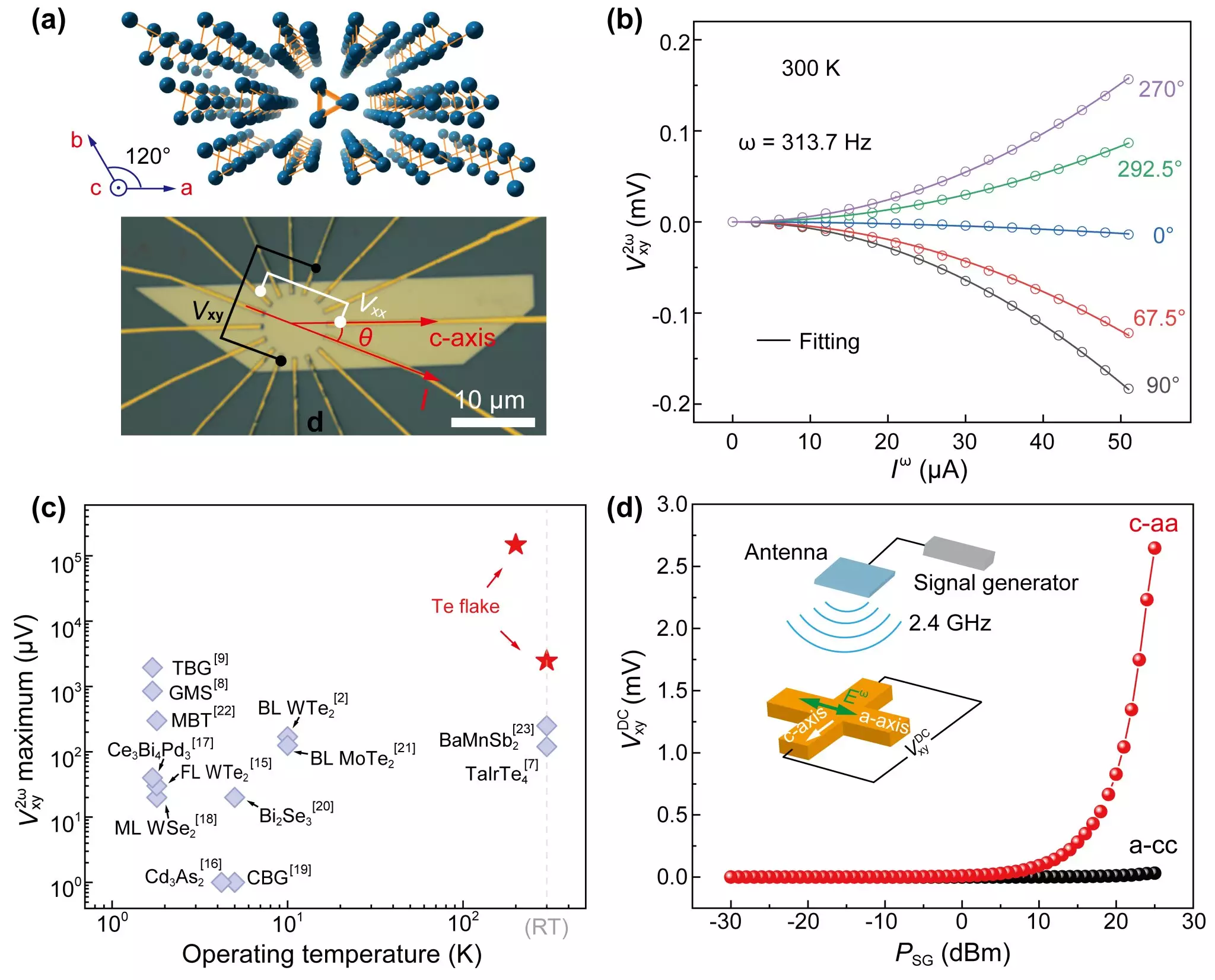Recent advancements in semiconductor research have opened new avenues for electronic device innovation. A research team has published groundbreaking findings in Nature Communications, showcasing significant nonlinear Hall effect (NLHE) and wireless rectification properties in tellurium (Te) at room temperature. This discovery is pivotal as NLHE could enhance the capabilities of various applications, including energy harvesting and effective wireless charging systems.
Historically, NLHE has garnered interest due to its ability to produce second-harmonic signals without the necessity of an external magnetic field. However, prior studies grappled with limitations such as low Hall voltage outputs and operational constraints tied to low temperatures. While NLHE has been reported in materials like Dirac semimetal BaMnSb2 and Weyl semimetal TaIrTe4, these examples demonstrated modest voltage outputs and minimal tunability, restricting their application in practical electronics.
In an effort to overcome these obstacles, the research team directed their focus toward elemental tellurium. Characterized by its one-dimensional helical chain structures that disrupt inversion symmetry, Te emerged as an optimal candidate for studying properties of NLHE. The team’s innovative research led to the discovery of NLHE in thin flakes of Te at room temperature, with outputs that are tunable through external gate voltage adjustments. Notably, a recorded maximum second-harmonic output of 2.8 millivolts at 300 K represents a tenfold increase over previous high records.
Through rigorous experimentation and theoretical assessments, the researchers determined that the NLHE observed in Te is largely driven by extrinsic scattering mechanisms. The peculiar structural characteristics of the thin flakes, combined with the breaking of surface symmetry, play a decisive role in this phenomenon. Understanding these reactions paves the way for further explorations into the nonlinear transport phenomena in solid-state materials.
Building on their achievements regarding NLHE, the research team took a novel approach by using radiofrequency (RF) signals instead of alternating current. This shift led to successful wireless RF rectification in Te thin flakes, with stable rectified voltage outputs spanning a frequency combination from 0.3 to 4.5 GHz. In contrast to traditional rectifiers, which depend heavily on p-n junctions or metallic-semiconductor junctions, the Te-based Hall rectifier leverages intrinsic material properties to provide a broadband response at zero bias. This significantly enhances the prospect of developing more efficient and reliable energy-harvesting devices.
The implications of this research extend far beyond the laboratory. By unpacking the mechanisms of NLHE in tellurium, the study not only enriches our knowledge of semiconductor physics but also unlocks potential advancements in electronic technology. As led by experts Prof. Zeng Changgan and Associate Researcher Li Lin from the University of Science and Technology of China, this research sets the stage for new classes of devices capable of changing how we approach sustainable energy and wireless technology in the future. The commitment to understanding such innovative materials foreshadows a new era in the electronics industry, bridging the gap between theoretical research and practical application.


Leave a Reply